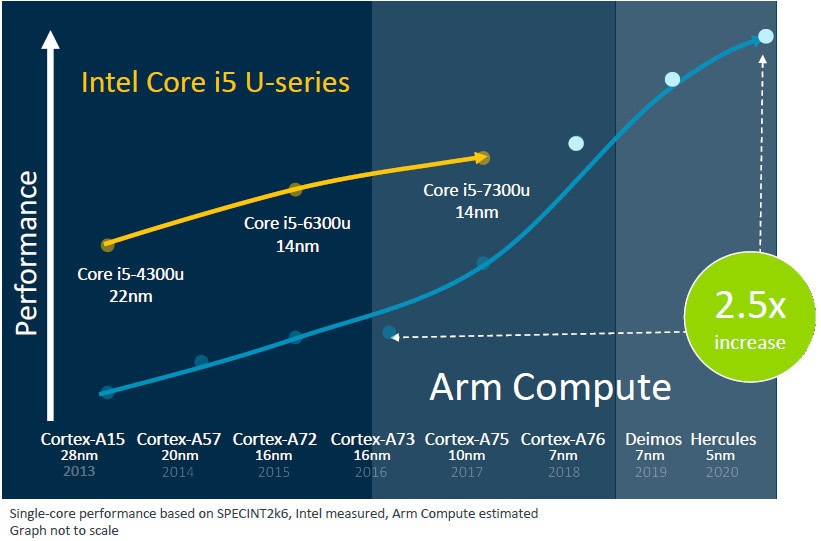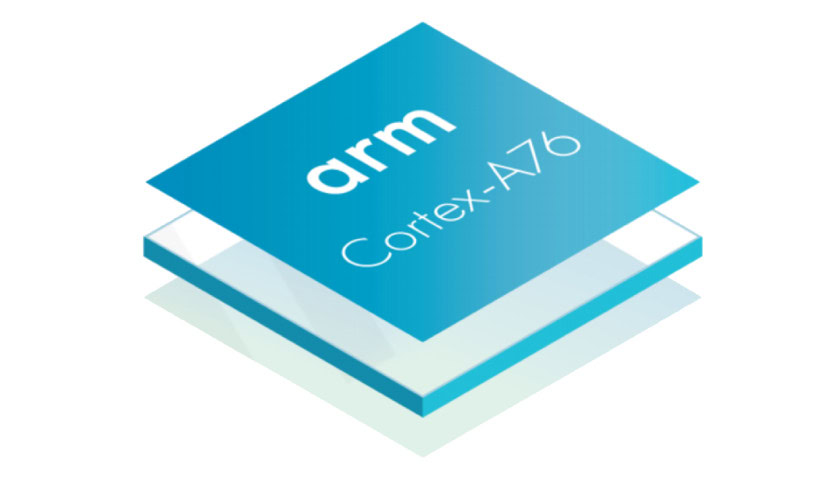Affiliate links on Android Authority may earn us a commission. Learn more.
Arm targets major performance leap for next-gen CPU cores
Published onAugust 16, 2018

- Arm has revealed its CPU IP roadmap through to 2020.
- Early details released on 2019’s Deimos and 2020’s Hercules CPUs.
- The theme is undeniably laptop based.
Uncharacteristically, Arm has just unveiled plans about its upcoming CPU IP roadmap through to 2020. The theme is undeniably laptop based, which follows the trend of the Cortex-A76 CPU announcement earlier in the year, but it also reveals some interesting tidbits about what will be heading to smartphones in the near future.
For starters, we have codenames for not one but two future CPU generations along with their target process. 2019’s codename is Deimos and is targeting a 7nm process, while in 2020 Hercules is due with both 7 and 5nm in mind. Obviously, this relies on major foundry players hitting their production targets too, but Arm is clearly confident enough that this will be the case.
Arm also provides details on one of its major performance targets. Between 2016’s 16nm Cortex-A73 and the 5nm Hercules in 2020, Arm projects up to a 2.5x boost in performance. While some of that will come from the smaller and more efficient manufacturing process and possibly higher clock speeds, there’s clearly also a major acceleration in the performance of Arm’s CPU micro-architecture.

A large chunk of that performance leap has already been made with the launch of the Cortex-A76, which the company claims can rival an Intel Core i5 7300u for single threaded performance. More astonishingly, a Cortex-A76 designed for laptops can achieve this performance level at just under 5W per core, compared with 15W from Intel equivalent lens laptop parts. As most current devices are utilizing Cortex-A73 and A75 cores, there are clearly big performance leaps to look forward to in the coming years.

A caveat though, this talk entirely relates to laptop-class performance. Future smartphone boosts won’t hit quite the same heights. Phones are stuck with the 2.5W TDP limit of the form factor for our entire performance needs, along with a smaller silicon footprint for parts like memory.
However, smartphones will benefit from the increased power efficiency of the smaller manufacturing nodes, targeting either longer battery life or higher performance. The importance of general micro-architecture improvements also cannot be understated either, which will boost performance regardless of the exact implementation.
Future smartphone boosts will be more muted, but will still benefit from upcoming micro-architecture improvements.
A CPU roadmap from Arm is certainly unusual, so why the sudden change?
Well, the laptop market is a tough one to crack, so a clear roadmap with performance targets helps assure customers that Arm is in this for the long haul. The reception of current-gen Arm based LTE equipped laptops, such as those powered by the Snapdragon 835, has been great from a connectivity standpoint, but less so on performance. Arm is being clear that its architecture has the necessary performance to compete and it’s coming very soon.
The bottom line is that smartphone and laptop-class performance continues to converge, and the growing market for 4G LTE and upcoming 5G equipped laptops is spurring this push. Arm sees its latest and future Cortex-A products fulfilling both these market needs.
Up next: HUAWEI confirms 7nm Kirin 980 and launch window for Mate 20 series